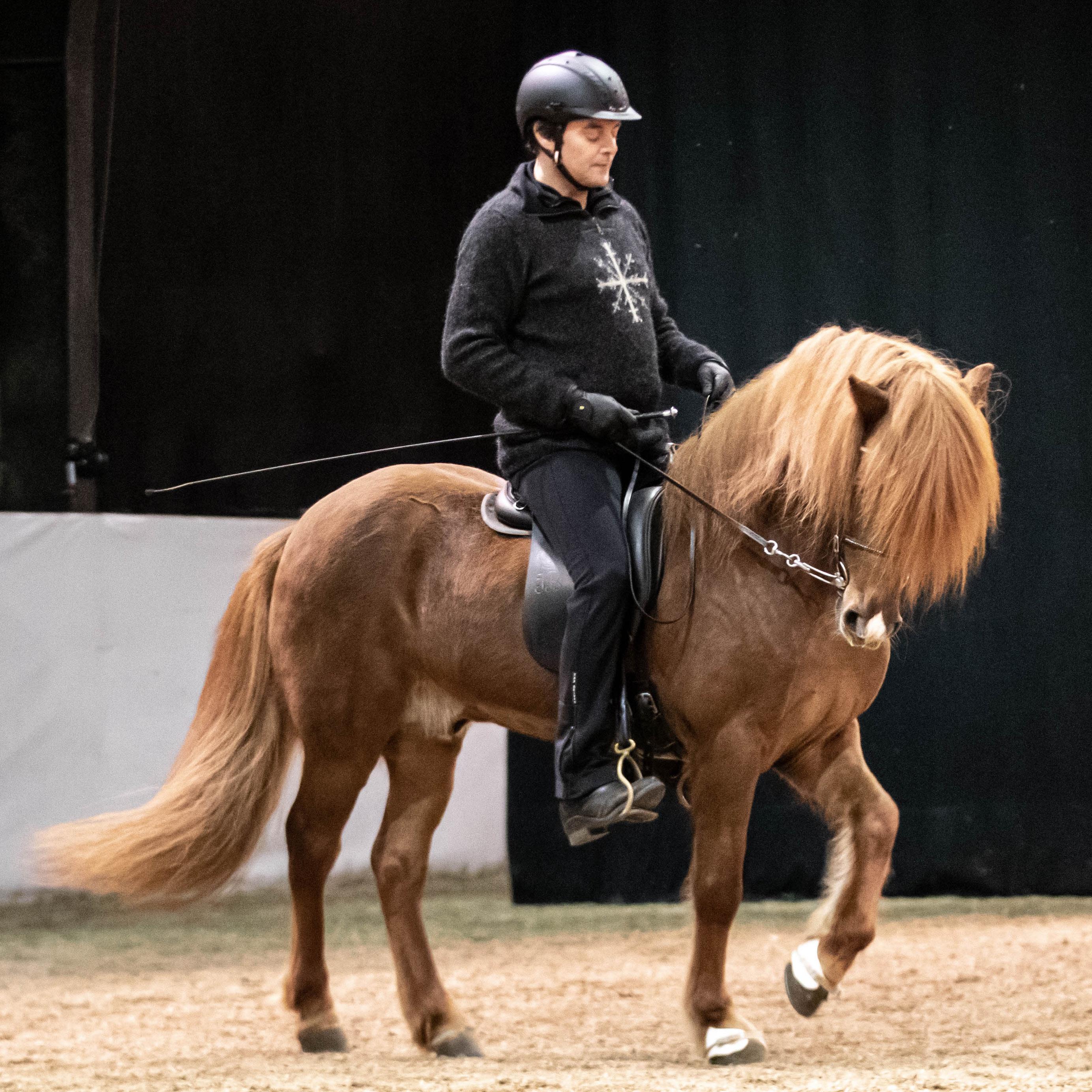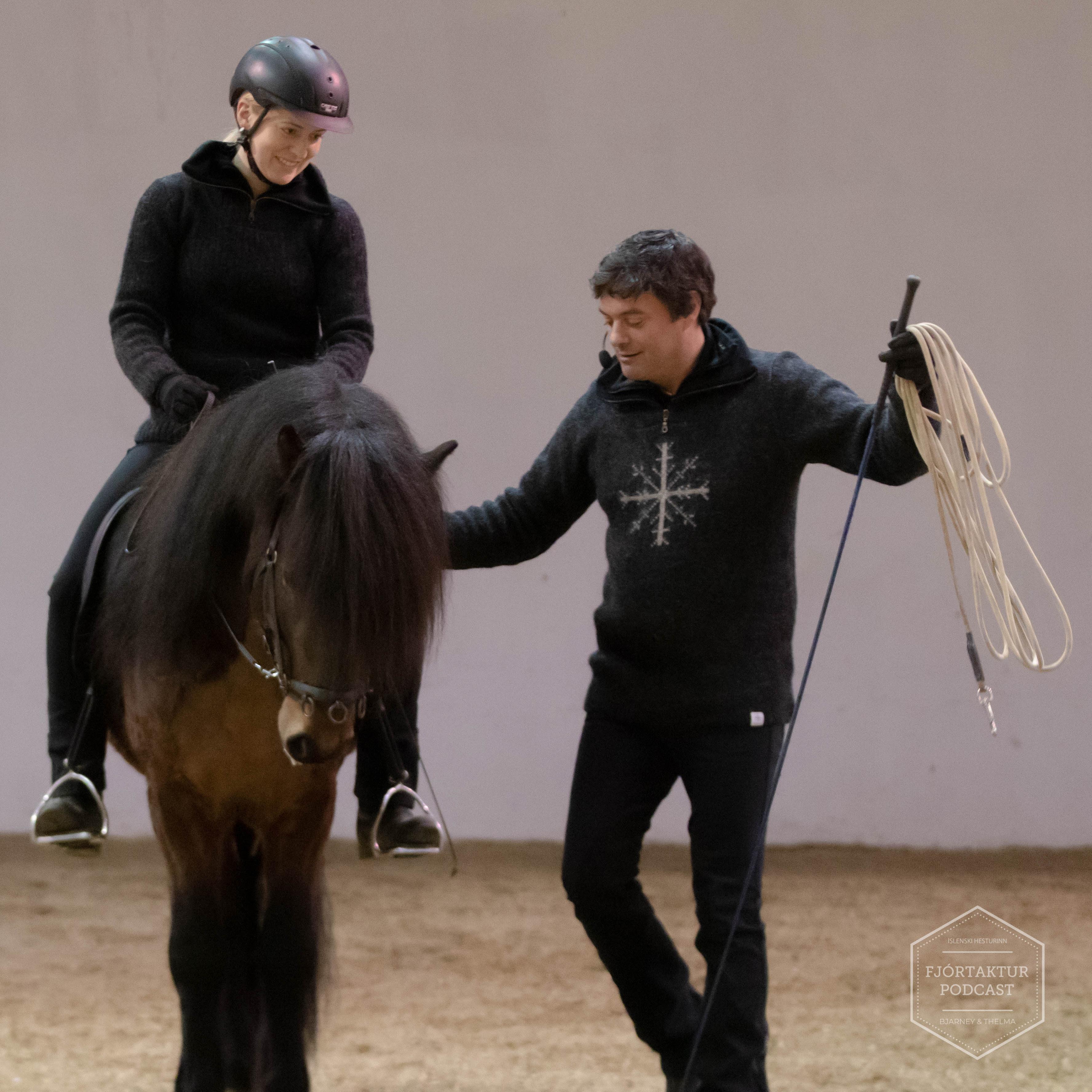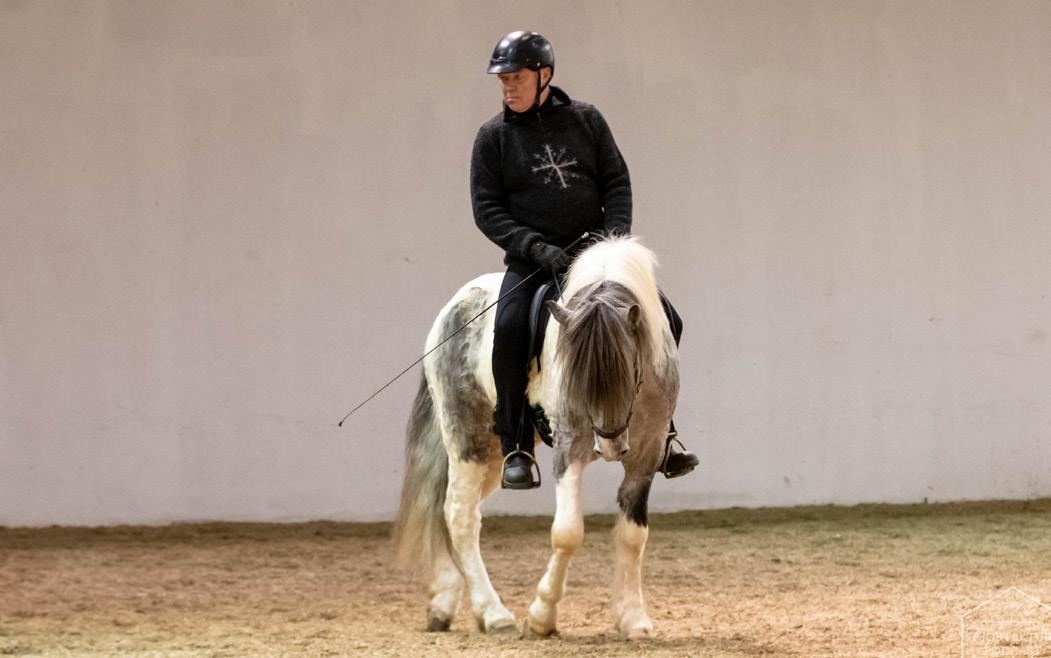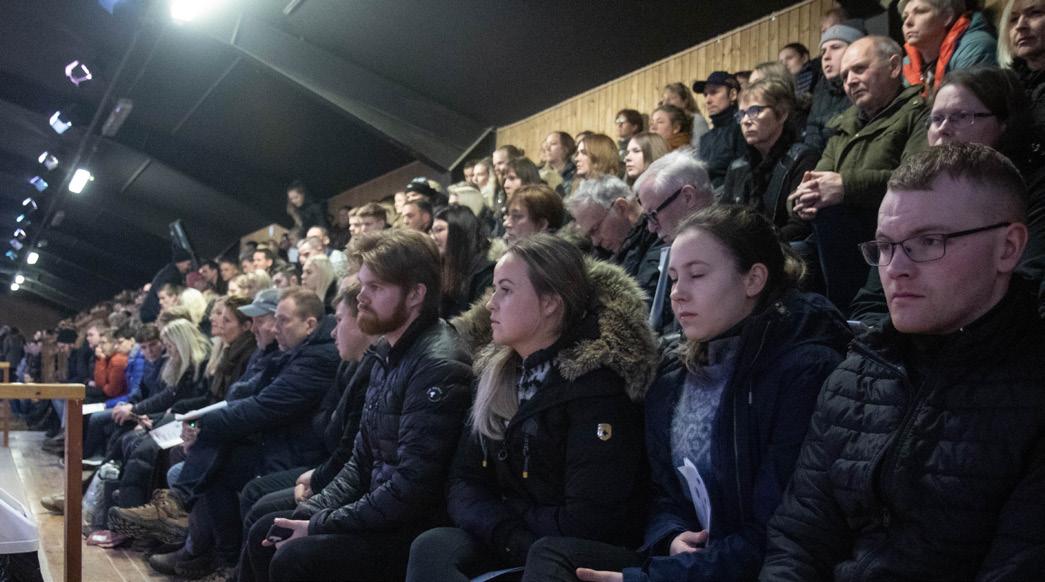
4 minute read
The rider of year 2020
Glampi frá Ketilsstöðum and Julio Borba. Photo: Bjarney Anna
Glampi frá Ketilsstöðum and Julio Borba.
Speaking the same language
On Saturday, the 8th of February a riding demonstration took place from morning to night. This demonstration was called Modern Equestrianism. In the evening a Galashow was held. Julio Barba was responsible for this day along with his co-workers, Olil Amble, Bergur Jónsson and Hafliði Halldórsson. A lot of riders and horses participated in both the demonstration as well as the Galashow. Fákasel was full of guests as all the tickets sold out in presale. Photos by Bjarney Anna Þórsdóttir

Julio in rein work with a young stallion. Photo: Bjarney Anna
Emphasize on quality work
In the beginning of the demonstration Julio Borba adressed the importance of using the same language during all communication with the horse, from the very beginning. What he means by this is to gain the horse’s understanding we need to use the same aid-system from the beginning. From when we first approach the horse in his pen and all the way through training. This way we get the horse to trust us as a leader with respect rather than fear.
Prepare for rein work
In the next part of the demonstration, Brynja Amble and Elin Holst walked the three-year-old horse Garpur frá Hellubæ into the riding hall. The goal was to teach a young horse to walk alongside the rider in preparation for rein work. It is important to emphasize that the horse respects the rider’s personal space and walks alongside him relaxed but focused. In this example you could clearly see the importance of using body language to give the horse a signal of whether he should stop or continue walking. Following this Garpur was lead in a circle. Julio does not use circular pen because he wants to teach the horse to be able to walk in a circle in a big open space in a riding hall. In the beginning you can use the walls of the riding halls for guidance and support, that way more trainers can help the rider in the ring to have control over the horse. They emphasized that the horse walked with correct posture from the beginning. Soon after the horse walks calmly in circular rein work, side reins are used to guide the horse to correct posture. The horse is not forced in any way as the side reins are loose. Before adding the side straps
Julio and Brynja Amble Gísladóttir working with Grandi frá Syðri-Gegnishólum. Photo: Bjarney Anna

the horse is prepared for the reins by the trainer putting his hands softly on the horse’s ring bit. This way the horse gives in and agrees to the soft reins. The side reins assist the horse by softening the top line in the neck, lifting the back and encourage the hind legs under neath his body. This way the horse is better prepared to hold a rider.
Introducing the rider
The next act was how to introduce the horse to the rider. For this act Grandi frá Syðri-Gegnishólum was introduced. Before Brynja Amble sat on Grandi‘s back, Julio lead him in a circle in an open space in the riding hall. Grandi is nearly four years old and had experienced this work before but for the sake of the demonstration they did this again like it was the first time. In this example you could clearly see the importance of the former act because Grandi obviously trusted and respected the rider. The trainer of the circle controls the direction and size of the circle, the rider who is sitting on the horse follows the horse’s movements and either sits in a right or left seat depending on which applies at the time. When the circle rein is removed and the riders´ hands take over, the trainer of the circle is still standing in the middle and helps with signals and aids and that way increases the horse’s understanding.
Correct posture
The final act before lunch break was when Julio lead Álfgrímur frá Syðri-Gegnishólum in a circle and demonstrated how he got the horse to put more weight on its hind legs and that way train the horse in correct posture with its health and durability in mind.
Meaningful to see the young horses
After the lunch break the development of the horse was continued to be demonstrated and now it was time for working with the horse in hand. Olil Amble and Ljósálfur frá Syðri-Gegnishólum demonstrated to the audience various exercises. They mainly stuck to The Four Circle of Newcastle which is named after its originator, William Cavendish, who was born in the 17th century and was the duke of Newcastle. These exercises are performed with the horse on a curve and are meant to able the horse to carry the weight either on the inner or outer hind leg,

Gráfeldur og Bergur Jónsson Photo: Bjarney Anna












